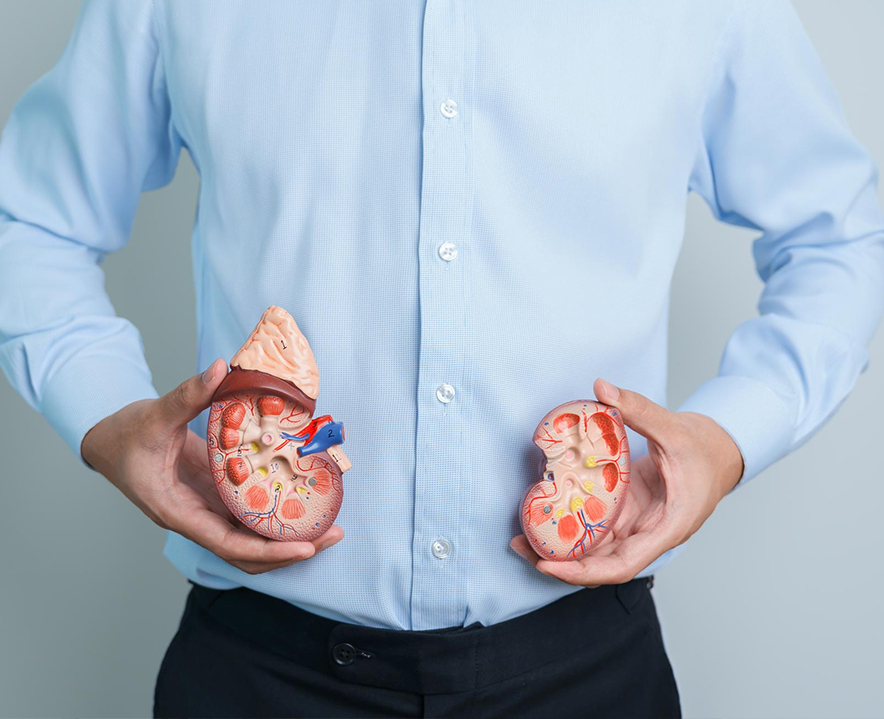Medical Treatments for Prostate Enlargement: Pros and Cons
Have you ever observed the changes in your urine habits or analyzed the significance of those uncomfortable instances? As men age, a common form of prostate enlargement, also known as benign prostatic hyperplasia (BPH), can cause uncomfortable signs such as frequent urination and difficulties entirely emptying the bladder, impacting their overall quality of life. In this blog, we focus on the pros and cons of prostate enlargement treatment, explore effective solutions, and empower men to make informed decisions regarding their
urological health.
Understanding the Root of Prostate Enlargement
The prostate is a walnut-sized gland that protects the urethra, or urine-flowing tube. The prostate can grow in size as men age due to hyperplasia. This enlargement could lead to several symptoms, including:
- Frequent Urination: Men with enlarged prostates Increased frequency of urination, especially at night (nocturia).
- Sense of incomplete emptying of the bladder: Some men may get the sense that their bladder has not been empty after urinating.
- Trouble starting or stopping urination: A weak urine stream or difficulty starting or stopping urination are potential signs of prostate enlargement.
- Urinary urgency: Another typical symptom is the urgent need to urinate, which often occurs without warning.
- Straining while urinating: Difficulty in keeping a consistent urine flow.
- Dropping at the final moment of urination: the act of leaking small amounts of urine after finishing urination.
- Urinary Retention: Prostate enlargement can cause difficulty emptying the bladder in extreme situations, needing quick medical intervention.
Benign prostatic hyperplasia treatments
Prostate enlargement, also known as benign prostatic hyperplasia (BPH), is a common disorder among older men that can produce urinary symptoms, which we have already discussed. However, lifestyle adjustments are possible to help reduce BPH symptoms, and medication therapies can also be useful in more severe cases. Every Prostate Enlargement treatment has advantages and disadvantages. Let’s look at some of the therapies for benign prostatic hyperplasia, including their pros and cons.
Pros:
1-Alpha-Blockers:
- Alpha-blockers, like tamsulosin and terazosin, relax prostate and bladder neck muscles, improving urine flow and symptom relief.
- These drugs are given orally, making them a non-invasive choice for symptom management.
2-
Alpha Reductase Inhibitors:
- These medications shrink the prostate, minimizing symptoms over time.
3-
Combination Therapy:
- A combination of alpha-blockers and 5-alpha reductase inhibitors can provide longer-lasting relief.
4-Minimal Invasive Procedures:
- Transurethral microwave therapy (TUMT) and laser therapy can reduce symptoms while having fewer risks than standard surgery.
5-
TURP (Transurethral Resection of the Prostate) Surgery:
- It helps to relieve severe symptoms and improve urine flow.
Cons: The procedure is invasive, and there is a risk of problems like infection, bleeding, and reverse ejaculation.
Cons:
1-Alpha-Blockers:
- Dizziness, exhaustion, and retrograde ejaculation (semen flowing backward into the bladder) are common side effects.
- While alpha-blockers may be successful in reducing symptoms, they may not treat the underlying cause of prostate enlargement.
2-Alpha Reductase Inhibitors:
- Sexual dysfunction, breast soreness, and an increased risk of high-grade prostate cancer are possible side effects.
3-Combination Therapy:
- Both drugs have an elevated risk of negative effects.
4-Minimal Invasive Procedures:
- In some situations, there may be negative effects and the need for repeat treatments.
5-TURP (Transurethral Resection of the Prostate) Surgery:
- The procedure is invasive, and there is a risk of problems like infection, bleeding, and reverse ejaculation.
Get the best prostrate enlarged treatment by Blue Bliss
Choosing the best treatment for an enlarged prostate involves careful consideration of the pros and cons, taking into account individual health, preferences, and the severity of symptoms. Consulting with a healthcare professional is crucial to determining prostatic hyperplasia treatment tailored to your unique needs. Men can recover control of their urinary health and enhance their overall health by addressing the disease effectively.v







